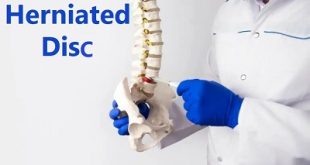Definition
Hand, foot, and mouth disease (HFMD) is a common and contagious childhood illness, caused by a virus. The disease is easy to spot because of its classic symptoms sores or blisters inside and outside the mouth, as well as a rash (red spots) or sores on the palms of the hands and soles of the feet. Infants and children younger than age 5 are most likely to get the virus. But older children, teens, and adults can get it, too. A mild outbreak of the disease commonly occurs during summer and early fall. The disease should not be confused with foot-and-mouth disease, which affects sheep, cattle, and pigs.
Hand, foot, and mouth disease
Epidemiology
Hand, foot and mouth disease most commonly occurs in children under the age of 10. It tends to occur in outbreaks during the spring, summer, and autumn seasons. This is believed to be due to heat and humidity improving spread. HFMD is more common in rural areas than urban areas; however, socioeconomic status and hygiene levels need to be considered. Poor hygiene is a risk factor for HFMD.
Outbreaks have occurred in China, Japan, Hong Kong, the Republic of Korea, Malaysia, Singapore, Thailand, Taiwan, and Vietnam. HFMD most commonly affects young children under the age of 10 and more often under the age of 5, but can also affect adults with varying symptoms.
Since 1997 there have been 71 large enterovirus outbreaks reported, mostly in East and South East Asia, primarily affecting children. From the years 2008 to 2014, more than 1 million HFMD cases have been reported in China each year.
Hand, foot, and mouth disease in a toddler
Risk factors of Hand, foot, and mouth disease
Risk factors for developing HFMD include
- Summer and fall seasons,
- Toddler age range,
- High-risk exposure location (such as daycare and preschool) and close contact (for example, family home) locations,
- Ineffective hygiene- infrequent soap and water hand-washing or not wearing disposable gloves when changing stool-containing diapers
- A compromised immune system
Causes of Hand, foot, and mouth disease
How is HFMD spread?
HFMD is most commonly caused by the coxsackie virus. The main way HFMD spreads is through contact with the fluid from inside the blisters, or with the droplets spread from sneezing and coughing. The virus can also be present in bowel movements (poo) for up to several weeks after the person has recovered.
You can get hand, foot, and mouth disease by
- Breathing air after a sick person coughs or sneezes
- Touching a sick person or making other close contact, like kissing, hugging, or sharing cups or eating utensils
- Touching a sick person’s feces, such as changing diapers, then touching your eyes, nose, or mouth
- Touching objects and surfaces that have the virus on them, like doorknobs or toys, then touching your eyes, nose, or mouth
Rarely, you can also get the viruses by swallowing recreational water, such as water in swimming pools. This can happen if the water is not properly treated with chlorine and becomes contaminated with feces from a person who has hand, foot, and mouth disease.
Hand, foot, and mouth disease symptoms
- Small red spots and tiny water blisters on the hands and feet. Seen on the palms, fingers, soles, and toes
- The diagnosis cannot be made without these
- Small painful ulcers (sores) in the mouth. Look for them on the tongue and sides of the mouth. Most children with HFMD have these, but they can be hard to see
- Also, small blisters or red spots on the buttocks (30%)
- Low-grade fever less than 102° F (39° C)
- Mainly occurs in children age 6 months to 4 years
Incubation and contagion periods
The typical incubation period of the virus varies from 3 to 6 days, Infected children and adults will be most contagious during the acute phase of the illness. However, the virus may persist in stools 8 to 12 weeks after the infection.
Everyone is susceptible to the infection but children aged less than 10 years of age are more often infected. There is no need to exclude a child from school or daycare if the child has hand-foot-and-mouth disease. However, these institutions may decide to inform parents about the fact that their children may have come into contact with an infected child for information purposes.
It is not necessary to exclude a child with symptoms of hand-foot and mouth disease from daycare if the child’s health status allows him or her to participate fully in the daycare’s activities, such as playtime and eating with other children.
Complications of Hand, foot, and mouth disease
Complications are rare but can develop if HFMD is left untreated in certain individuals.
If the underlying cause is a virus known as enterovirus 71, it can affect the nervous system.
This can lead to:
- Meningitis, an inflammation of the spinal cord
- Encephalitis, an inflammation of the brain
- Acute flaccid paralysis, which weakens the respiratory muscles and reduces the ability to swallow
Congenital deformities can occur if a woman contracts coxsackievirus during pregnancy. This may be linked to the development of fetal heart problems. However, the risk of this is very low, as it is rare that the virus can pass through the placenta.
Scratching at blisters or rashes can lead to a secondary infection.
If blisters develop in the throat, there may be a risk of dehydration.
In severe cases, cardiorespiratory failure can occur.
Diagnosis and test
If there’s an outbreak of the virus at your child’s school or crèche, it’s likely they’ve caught the virus. You will probably know this without needing to bring your child to a GP.
You should bring your child to the GP if:
- You are not sure whether it is hand, foot, and mouth or something else
- You are worried about your child
- Your child is not drinking or is showing signs of dehydration
- You are finding it difficult to control your child’s temperature
- They do not improve after 7 days
You should phone ahead to let the GP know you think your child might have hand, foot and mouth. As this virus is contagious, they may arrange to see you at a time when the surgery is quiet. This is to prevent the infection from spreading to other patients.
If your GP or pediatrician is not sure if your child has hand, foot and mouth disease, they may need to do other tests.
These could include:
- A swab – where they rub the back of your child’s throat with a swab (this looks like a long cotton bud)
- A poo sample
These samples will be sent to the lab for testing.
Treatment and medications
While there’s no medical cure or treatment for hand, foot, and mouth disease, your pediatrician can help you come up with ways to make your child more comfortable while the illness runs its course, Auth says. Here, some home remedies for hand, foot, and mouth disease to try.
Avoid eating any food that is spicy or acidic: These foods can make the mouth sores more painful.
Reduce the fever: Avoid giving a child or teenager aspirin because aspirin can cause Reyes syndrome, which may lead to brain and liver damage. Reyes syndrome usually develops after a child (or teen) takes aspirin while fighting off a virus. HFMD is caused by viruses.
While aspirin can cause problems, acetaminophen is generally safe and effective for reducing fever in children and teens. Just be sure to follow the dosing, which is based on a child’s weight. Adults can take aspirin.
Over-the-counter pain relief: Ask your pediatrician about appropriate pain medications, such as ibuprofen (Motrin or Advil) or acetaminophen (Tylenol), and follow the dosage procedures for your child’s age. Taking them half an hour before mealtime can make eating and drinking less painful. Experts also recommend OTC pain relievers to help bring down a fever. Let your pediatrician know if your child’s temperature remains high after taking a pain reliever.
Plenty of liquids: Make sure your child is hydrating, either with breast milk or formula, or, if he’s older, with water. Keep track of urine output: If your child has less than three wet diapers during his waking day or, if toilet trained, goes to the toilet less than three times, call your pediatrician. Another way to ensure your child is hydrated is to make sure he’s producing wet tears. if your child is crying without tears, it’s a sign he may be dehydrated and needs to be seen by a pediatrician ASAP.
Cold or soft foods: Bring on the ice pops! Foods that are cooling and easy to eat will help soothe a sore throat and painful mouth. Try making breast milk ice pops for baby, and pudding, applesauce, chilled soups or smoothies for an older child.
Cover mouth blisters: Use a combination of Maalox and Benadryl, then use a Q-tip to cover mouth sores with the mixture. This can help soothe irritation and make it easier for babies and toddlers to drink; but just as with OTC pain relief, ask your pediatrician first before you try this remedy.
Rest: Your child is likely to feel cranky, especially if she has a temperature or is in pain, so plenty of snuggles and cuddles on the couch are a good hand, foot, and mouth disease treatment.
How Hand, foot, and mouth disease can be prevented?
Certain precautions can help to reduce the risk of infection with hand-foot-and-mouth disease:
Wash hands carefully: Be sure to wash your hands frequently and thoroughly, especially after using the toilet or changing a diaper and before preparing food and eating. When soap and water aren’t available, use hand wipes or gels treated with germ-killing alcohol.
Disinfect common areas: Get in the habit of cleaning high-traffic areas and surfaces first with soap and water, then with a diluted solution of chlorine bleach and water. Child care centers should follow a strict schedule of cleaning and disinfecting all common areas, including shared items such as toys, as the virus can live on these objects for days. Clean your baby’s pacifiers often.
Teach good hygiene: Show your children how to practice good hygiene and how to keep themselves clean. Explain to them why it’s best not to put their fingers, hands or any other objects in their mouths.
Isolate contagious people: Because hand-foot-and-mouth disease is highly contagious, people with the illness should limit their exposure to others while they have active signs and symptoms. Keep children with hand-foot-and-mouth disease out of child care or school until fever is gone and mouth sores have healed. If you have the illness, stay home from work.
 Diseases Treatments Dictionary This is complete solution to read all diseases treatments Which covers Prevention, Causes, Symptoms, Medical Terms, Drugs, Prescription, Natural Remedies with cures and Treatments. Most of the common diseases were listed in names, split with categories.
Diseases Treatments Dictionary This is complete solution to read all diseases treatments Which covers Prevention, Causes, Symptoms, Medical Terms, Drugs, Prescription, Natural Remedies with cures and Treatments. Most of the common diseases were listed in names, split with categories.








Hey there! Great article on hand, foot, and mouth disease! It’s crucial to practice good hygiene, like frequent handwashing, to prevent the spread of this common childhood illness. Stay safe and keep those germs away!